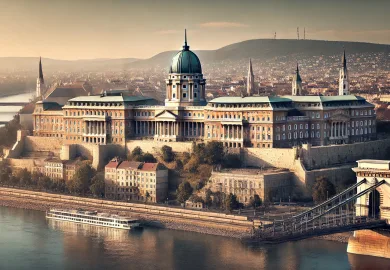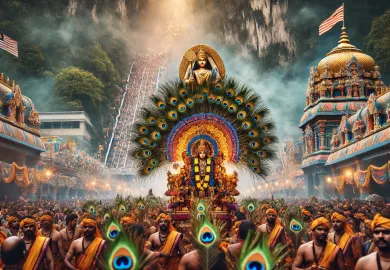
Schloss Schönbrunn, one of the most stunning historical landmarks in Europe, stands as a symbol of the rich cultural heritage of Vienna, Austria. This magnificent palace, with its breathtaking Baroque architecture and vast, intricately designed gardens, has long been a must-visit attraction for travelers from around the world. Whether you’re an avid history enthusiast, an art lover, or simply looking for a peaceful stroll through one of the world’s most elegant palaces, Schloss Schönbrunn offers an unforgettable experience.
The Schönbrunn Palace was the former summer residence of the Habsburg rulers, and it has witnessed centuries of imperial history. Today, it serves as a museum, welcoming millions of visitors annually who come to explore its lavish interiors, lush gardens, and to get a glimpse of royal life during the Habsburg reign.
The Historical Significance of Schloss Schönbrunn
Schloss Schönbrunn has a deeply rooted historical significance, dating back to the 16th century when the Habsburg monarchs acquired the estate. Initially built as a hunting lodge, it underwent numerous renovations and expansions, eventually becoming the grand palace we know today. It was during the reign of Empress Maria Theresa in the 18th century that the palace took on its full splendor.
One of the most important aspects of visiting Schloss Schönbrunn is the opportunity to dive into the history of the Austro-Hungarian Empire. As you walk through the palace’s 1,441 rooms, you’ll get a glimpse into the royal lifestyle and the fascinating world of the Habsburgs, who shaped much of Central European history. The Great Gallery, with its opulent chandeliers and frescoes, was the site of many royal banquets and receptions, adding to the allure of this magnificent palace.
The historical significance of this UNESCO World Heritage Site cannot be overstated, as it has also served as a backdrop for key historical events, including the Congress of Vienna in 1814-15, which played a vital role in reshaping the political landscape of Europe.
Exploring the Lavish Interiors of the Palace
Visitors to Schloss Schönbrunn are often mesmerized by the palace’s luxurious interiors, which showcase a blend of Baroque and Rococo styles. As you step inside, the grandeur of the palace is immediately apparent. The rooms are meticulously decorated with gilded stucco, frescoes, and exquisite furniture, all designed to reflect the power and wealth of the Habsburg dynasty.
One of the most popular rooms in the palace is the Vieux-Lacque Room, which was used by Emperor Franz Joseph, one of Austria’s longest-reigning monarchs. The room’s intricate lacquer work and opulent furnishings provide insight into the personal life of the emperor, who was known for his dedication to the empire.
Another highlight is the Hall of Mirrors, where Wolfgang Amadeus Mozart famously performed at the age of six. This room epitomizes the grandeur of Schönbrunn and remains a favorite for visitors looking to immerse themselves in the history of art and music in Vienna.
For a complete experience, visitors are encouraged to take the Grand Tour of the palace, which includes access to 40 of the palace’s most impressive rooms. From the Imperial Apartments to the more intimate chambers, each room tells a story of royal opulence and artistic mastery.
Strolling Through the Beautiful Schönbrunn Gardens
No visit to Schloss Schönbrunn is complete without exploring its vast and meticulously manicured gardens. Spanning over 500 acres, the Schönbrunn Gardens are a marvel in their own right, offering visitors a peaceful retreat and an opportunity to enjoy the beauty of landscape design at its finest.
Designed in the French Baroque style, the gardens feature an array of fountains, statues, and flowerbeds that are perfectly aligned with the palace’s aesthetic. The Neptune Fountain, a centerpiece of the garden, adds to the enchanting atmosphere, with its mythological sculptures and serene water features.
One of the most notable attractions within the gardens is the Gloriette, a stunning structure perched on a hill overlooking the palace. From the Gloriette, visitors can enjoy panoramic views of Vienna, making it a perfect spot for photography and relaxation. The structure, originally designed as a dining hall for the Habsburgs, now serves as a café where visitors can sip coffee while taking in the beauty of their surroundings.
Whether you’re visiting in the spring, when the flowers are in full bloom, or in the winter, when the gardens are blanketed in snow, the Schönbrunn Gardens offer a magical experience year-round.
Family Fun at the Schönbrunn Zoo
Another highlight of Schloss Schönbrunn is its zoo, Tiergarten Schönbrunn, which is the oldest zoo in the world. Established in 1752 by Emperor Franz I, the zoo has been carefully preserved and modernized over the years, making it one of the best zoos in Europe.
Located within the palace grounds, Tiergarten Schönbrunn is home to over 700 species, including giant pandas, elephants, and endangered animals from around the globe. Families visiting the palace will find the zoo to be an exciting addition to their itinerary, offering both education and entertainment for children and adults alike.
In addition to the animal exhibits, the zoo also features beautiful gardens, making it a delightful place to stroll and relax while learning about the world’s most fascinating creatures. For a truly unique experience, visitors can even opt for a behind-the-scenes tour, where they’ll get to see how the zoo cares for its animals and participates in conservation efforts.
A visit to the Schönbrunn Zoo is a wonderful way to combine cultural history with a bit of fun, making Schloss Schönbrunn a destination that caters to all ages and interests.
Practical Tips for Your Visit to Schloss Schönbrunn
Visiting Schloss Schönbrunn is an experience that requires careful planning to make the most of your time. Here are some practical tips to ensure your visit is smooth and enjoyable:
- Buy tickets online: Schloss Schönbrunn is a popular destination, and the queues can be long, especially during peak tourist seasons. Purchasing your tickets online in advance will save you time and allow you to skip the lines.
- Choose the right tour: There are different ticket options depending on how much of the palace you want to explore. The Grand Tour offers the most comprehensive experience, but if you’re short on time, the Imperial Tour covers the main highlights.
- Visit early or late in the day: To avoid crowds, try to visit early in the morning or later in the afternoon. This also gives you the best light for photography, especially in the gardens.
- Wear comfortable shoes: With so much to see, both inside the palace and throughout the extensive gardens, you’ll be doing a lot of walking. Comfortable shoes are a must to fully enjoy your visit.
- Plan for extra time at the zoo: If you’re traveling with family or are interested in wildlife, set aside a few extra hours for the Schönbrunn Zoo. It’s easy to lose track of time while admiring the animals and the zoo’s beautiful surroundings.
Whether you’re marveling at the palace’s interiors, strolling through its stunning gardens, or enjoying a day at the zoo, Schloss Schönbrunn promises a memorable visit steeped in history and beauty.
Final Thoughts
Schloss Schönbrunn is not just a palace; it’s a journey through the history of Vienna, the splendor of Baroque art, and the legacy of one of Europe’s most influential royal families. Its timeless appeal, grand architecture, and lush gardens make it one of the most visited tourist attractions in Austria. Whether you’re a first-time visitor or returning for another visit, the charm and elegance of Schönbrunn will leave you with lasting memories of Vienna’s imperial past.








